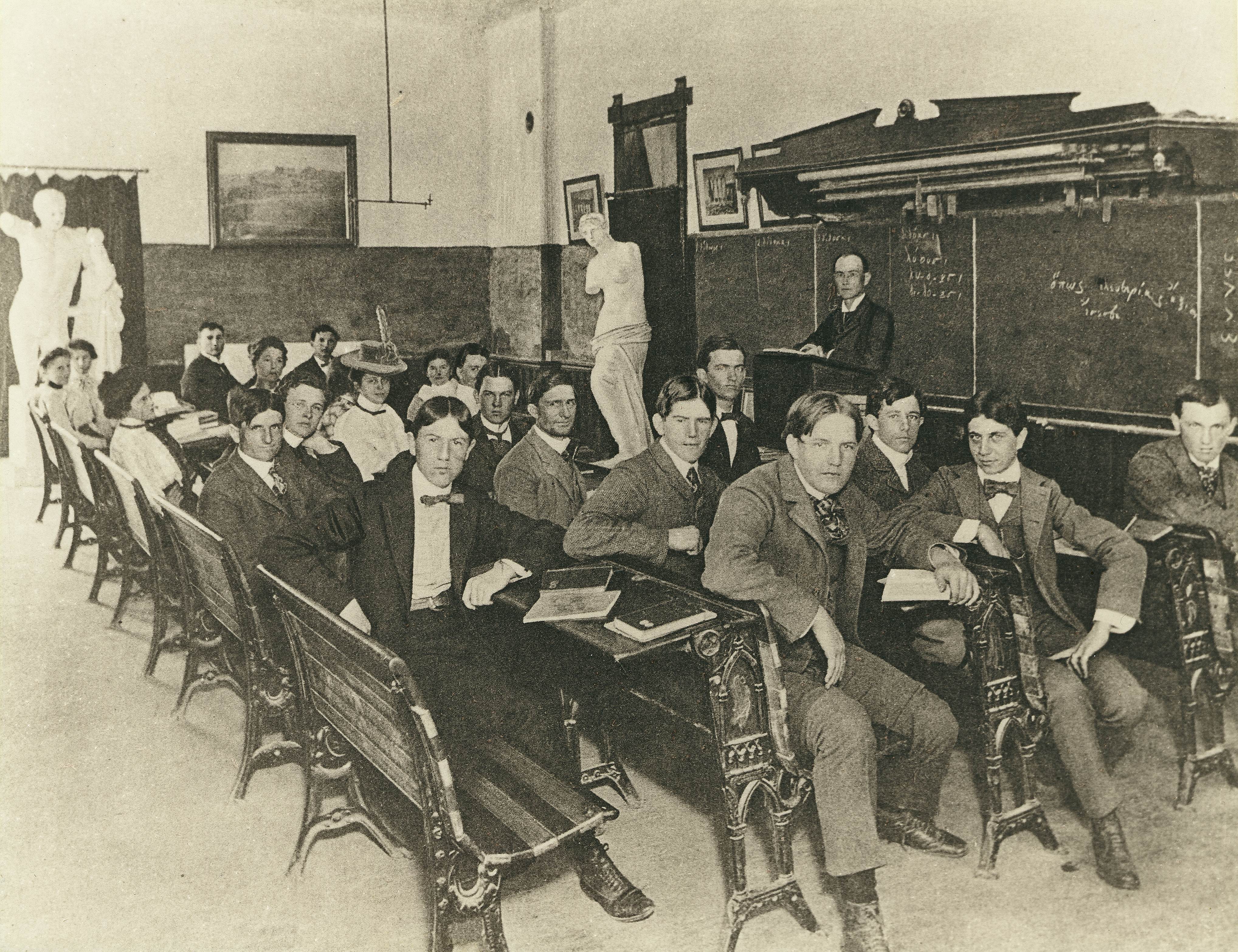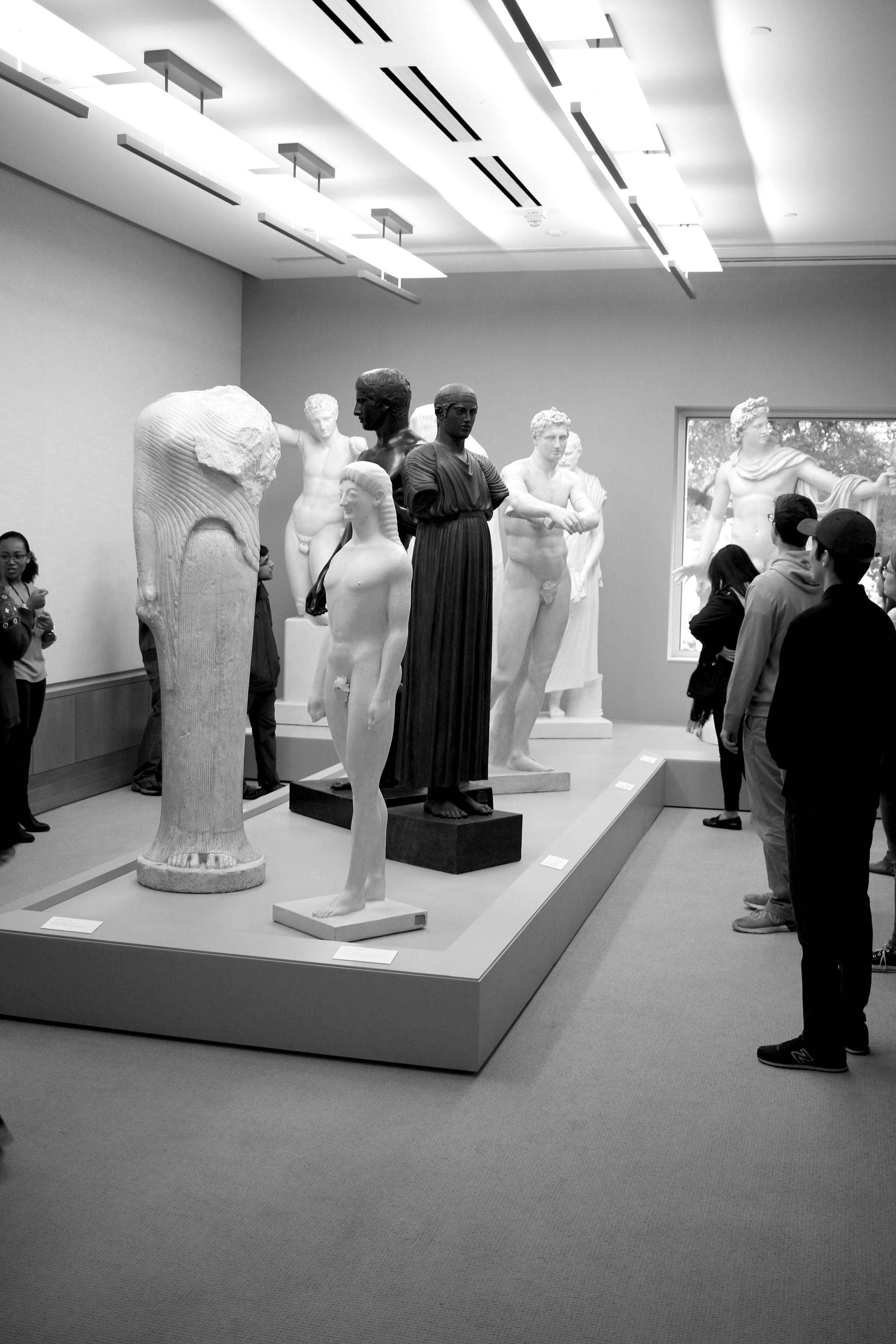William J. Battle Collection of Plaster Casts of Ancient Sculpture
Housed at the Blanton Museum of Art at the University of Texas at Austin is an impressive collection of plaster casts of Greek and Roman sculpture, informally referred to as the “Battle Casts”.

Assembling the Casts
The collection began in 1894 with the purchase of three full-scale casts (the Hermes of Praxiteles from Olympia, the Venus de Milo, and the Lateran Sophocles) by William J. Battle, Associate Professor of Greek at the university. Over the next three decades, Battle oversaw the purchase of over 100 additional plaster casts of Greek “masterworks” (or of Roman “copies” of supposed Greek originals). The collection includes such well-known works as the Venus de Milo, the Apollo Belvedere, the Delphi Charioteer, and fragments from the Parthenon frieze. At the time, assembling plaster cast collections of ancient sculpture for study and public edification was an established tradition among large university and museum collections in countries without their own Classical heritage. Battle’s cast collection was the first in the central United States, confirming Texas’s status in Humanities innovation.
William J. Battle and his students in a classroom in the Old Main Building with the Hermes and Venus, around 1903. Photo from the W. J. Battle Archives, Dolph Briscoe Center for American History.

The Survival of the Casts
What is remarkable about the Battle Casts today, however, is their survival through the middle decades of the 20th century when the newest educational technology – slide projectors – replaced the casts with photographs of the ancient original sculptures in foreign settings. By comparison these photographs were considered more “authentic” because they showed the original objects, rather than replicas in plaster, leading many museums and institutions to destroy their casts or remove them from permanent collections. Battle’s continued presence at UT saved the Battle Casts from this fate until the early 1950s, when these changing ideas of authenticity were joined by conflicting claims to the university’s public spaces occupied by the casts. At this time, the casts were removed from their original gallery hall in the UT Main Building and were shuffled through storage until their public reemergence in the late 1970s, long after critiques of their authenticity had passed. The casts could now be viewed as art objects in their own right and the Battle Casts now exist as one of the largest surviving collections of plaster casts in North America.
William J. Battle at a display of the casts in Battle Hall arranged for the Texas Centenary in 1936, while the new Main Building was under construction. Photo from the W. J. Battle Archives, Dolph Briscoe Center for American History.

The Casts at the Blanton Museum
In 1976 Caroline Houser, an associate professor in the Department of Art and Art History at UT, examined the casts’ condition; the damage sustained from constant movement between gallery spaces and into storage was evident on the casts’ surfaces, much like the scars time has left on the Classical originals, prompting the then-president of UT to fund their restoration and reinstallation on campus. The restored Battle Casts were first displayed in the Blanton’s previous location, which is now the Harry Ransom Humanities Center, and when the new Blanton building was completed in 2006, they were put in a place of honor in its atrium and rotunda. Since 2006, however, new and changing demands on the Blanton’s installation spaces mean that the casts have once more been shuffled around. Some of them are now in the Stark Center for Sport and Physical Culture; others are back in storage; and a few of the most educationally useful are displayed in the foyer to the Prints Department and in the Osborne Seminar room on the first floor of the Blanton.
Through the collaboration of the Blanton and the support of Humanities Texas, the Blast from the Casts project reunites the Battle Casts as a cohesive collection in digital form to make in-depth, up-close, personal interaction with the casts widely accessible to students and the public, thus continuing the tradition of Texas institutions that provide innovative opportunities for deeper study, dissemination, and critique in the Humanities.
Students in a Greek Archaeology class visit the casts in the Osborne Seminar Room at the Blanton Museum of Art. Photo by Adam Rabinowitz.